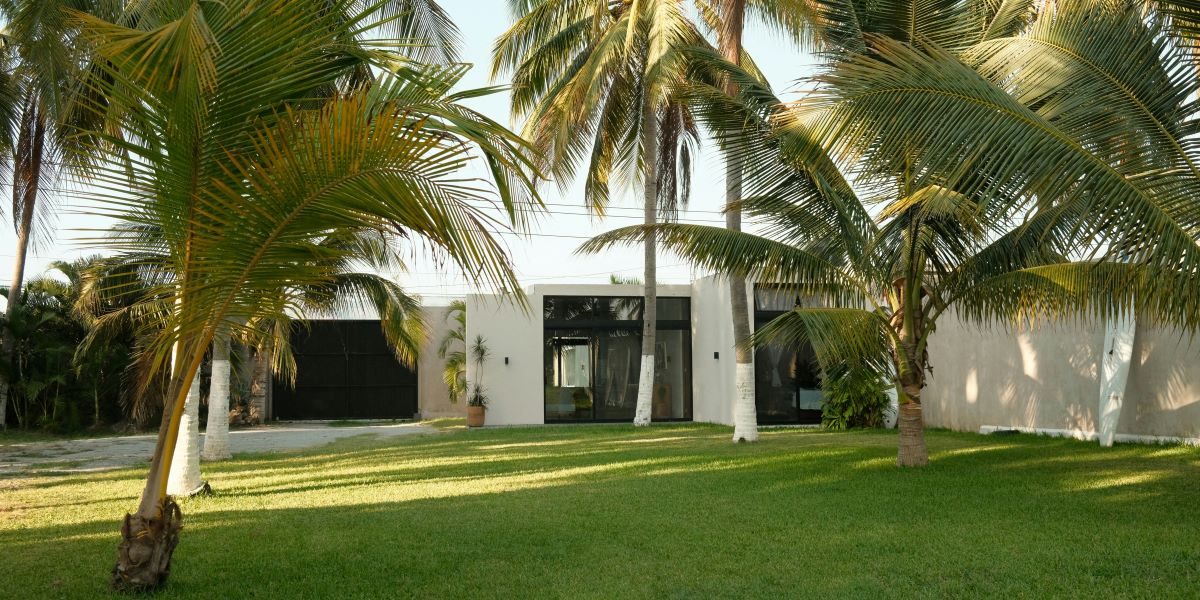Synthetic grass is a popular choice for homeowners looking to enhance a landscape. It offers a lush, green look year-round with minimal maintenance. However, creating an appealing and functional synthetic grass design takes more than just laying down artificial turf. This article provides seven tips to improve a synthetic grass landscape design and create a space that is both beautiful and practical.
Choose the Right Type of Synthetic Grass
The first step in creating a stunning synthetic grass landscape is choosing the right type of artificial turf. Synthetic grass comes in different textures and pile heights. Some are designed to mimic natural grass, while others are more durable for high-traffic areas.
On top of that, you should consider how the space will be used. For example, if you are designing a lawn for pets or children, it is advisable to opt for stronger, more resilient grass. Make sure that the turf suits the needs of the landscape and complements the overall design.
Focus on Proper Installation
Improper installation can lead to issues such as wrinkles, uneven surfaces, or drainage problems. Start by preparing the ground properly, removing any weeds and debris, then leveling the soil. A solid base layer of crushed stone or gravel ensures good drainage, preventing water from pooling on the surface. When installing the synthetic grass, stretch it tightly to avoid bunching and secure the edges to keep it in place.
Blend with Natural Elements
Without proper integration, synthetic grass may appear too uniform or artificial. To make it blend more naturally, add surrounding features like flower beds or rocks. Incorporating natural elements softens the edges of the artificial turf, making it look like part of the natural environment. Use plants with varying heights and colors to add depth and contrast to the design.
Use Edging to Define the Space
Edging is a vital part of any landscape design, especially when working with synthetic grass. Borders help define the area where artificial turf ends and other materials begin. This can be done with stone or metal, depending on the desired aesthetic. Proper edging not only prevents the grass from shifting but also maintains a tidy and polished appearance. Additionally, it protects the edges from damage caused by foot traffic or lawnmowers.
Consider the Layout and Shape
Keep in mind that the layout of a synthetic grass lawn can help make a big difference in the overall look of a landscape. Straight lines and rectangular shapes are common, but curves and irregular shapes, like the synthetic grass Denver, can make the area feel more dynamic and inviting.
Instead of having a large, square lawn, try breaking it up into smaller sections. For example, create circular or kidney-shaped lawns that flow naturally around garden features. That’s why having a thoughtful planning of the layout helps create a balanced and pleasing design.
Add Functional Features
Enhance the functionality of a synthetic grass landscape by adding practical elements. Consider incorporating pathways, seating areas, or even outdoor kitchens or fire pits. These features can enhance usability while maintaining the low-maintenance benefits of synthetic grass.
Additionally, you can create a path with stone or wooden tiles that lead through the artificial lawn, adding texture and visual interest. These functional features not only improve the look of the landscape but also make the space more enjoyable to use.
Maintain Your Synthetic Grass
While synthetic grass requires less maintenance than natural grass, it is still important to take care of it to keep it looking great. Routine maintenance, such as brushing the surface and occasional rinsing, helps maintain its appearance. Regular brushing helps maintain the pile and prevent flattening, while rinsing removes dust or debris. Also, check for any weeds that may grow through the seams. Proper upkeep ensures that the grass remains fresh and vibrant year-round.
Transform Outdoors with Low-Maintenance Synthetic Grass
Improving a synthetic grass landscape design involves more than just installing turf. By selecting the right type of grass, ensuring proper installation, blending with natural elements, and maintaining the turf, a beautiful and functional outdoor space can be created. With these tips, homeowners can achieve a vibrant, low-maintenance landscape that enhances their home’s curb appeal.
Published by Iris S.

















